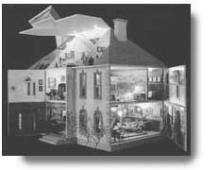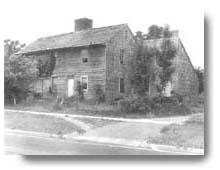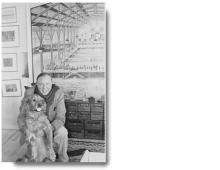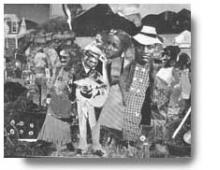Doll House At Poor House
Doll House At Poor House

The historic J. Harper Poor Cottage on Main Street, East Hampton, owned by Rita and Gary Reiswig, and the rarely exhibited LTV dollhouse, a miniature estate created by East End artists and artisans, can be visited from Friday, Dec. 6, through Dec. 9, from 1 to 5 p.m.
The J. Harper Poor Cottage, once an early American saltbox, was transformed into an elegant manor house in 1885. In 1910, J. Harper Poor commissioned the English architect Joseph Greenleaf Thorp to redo the house in the style of the Arts and Crafts movement.
Unchanged since then, but recently restored by its owners, it is one of East Hampton's most intriguing architectural treasures.
Morris In Miniature
The interiors of both the Poor house and the doll house are inspired by William Morris, whose decorative artistry of 100 years ago is currently the subject of centennial exhibits in New York and London.
The privately owned LTV doll house, a 14-room recreation of a manor house of the same period and style as the Poor Cottage, has been exhibited only twice before. This will be its last public appearance.
The miniature house contains over 50 original works of art by local artists, who created them in the style of the day.
New additions created for this last public showing are a flamboyant family of dolls made by Priscilla Bowden, an East Hampton artist, and dressed, in the 1920s style, by Alexandra Leigh-Hunt.
Preview Benefit
The doll house can be seen at the J. Harper Poor Cottage, where the open house and exhibit will be launched with a festive preview benefit for LTV next Thursday, from 5 to 8 p.m. The reception will feature food, song, wassail, good cheer, and Daphne Hellman playing jazz on the harp. During the benefit evening, Mr. Reiswig will lead tours of the house and talk about its history.
Tickets to the party are $35. Handmade wreaths, ornaments, and copies of "The Doll House: Little Tiny Visions," a book of photographs by Rameshwar Das, accompanied by fiction and nonfiction by 15 local authors, will be on sale.
On Dec. 8 at 1 p.m., there will be a special children's story hour, during which Lou Ann Walker will read her story from "The Doll House."




